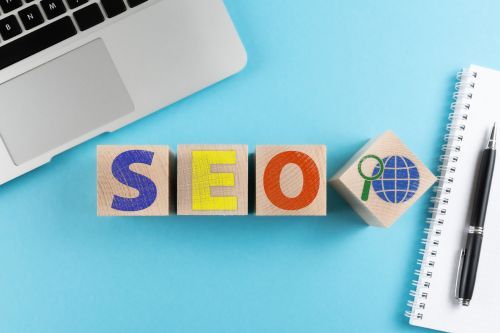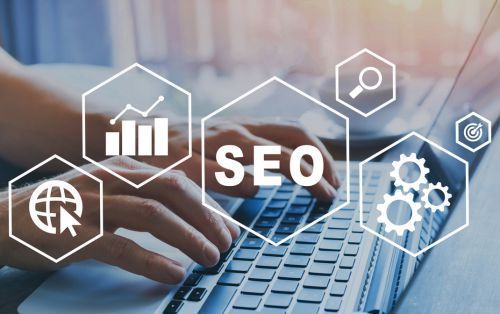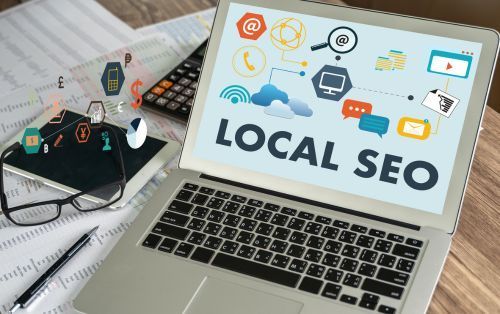
Understanding On-Page SEO: Optimizing Your Website for Search Engines
In today's digital landscape, having a strong online presence is crucial for businesses. And when it comes to driving organic traffic and improving search engine rankings, on-page SEO plays a vital role. On-page SEO refers to the optimization techniques implemented directly on your website to enhance its visibility and relevance to search engines. In this article, we will delve into the key components of on-page SEO and provide practical tips to help you optimize your website for search engines.

Conduct Thorough Keyword Research:
Keyword research forms the foundation of on-page SEO. Begin by identifying relevant keywords and phrases that align with your business, industry, and target audience. Tools like Google Keyword Planner, SEMrush, and Moz Keyword Explorer can assist you in finding high-value keywords with decent search volume and manageable competition. Incorporate these keywords strategically throughout your website's content.
Optimize Meta Tags:
Meta tags provide important information about your web page to search engines. Start with the title tag, which should be concise, compelling, and include your primary keyword. Write a unique meta description that accurately summarizes your page's content and encourages users to click through from search engine results pages (SERPs). While meta tags may not directly affect rankings, they greatly influence click-through rates and user engagement.
Optimize URL Structure:
Clean and user-friendly URLs are not only beneficial for visitors but also for search engines. Include relevant keywords in your URLs, making them concise, descriptive, and easily readable. Avoid using complex URL structures with unnecessary characters or parameters. A well-optimized URL provides a clear indication of the page's content to both users and search engines.
Create Engaging and Optimized Content:
Content is king, and search engines love fresh, valuable, and optimized content. Develop high-quality, original content that addresses the needs and interests of your target audience. Incorporate relevant keywords naturally within the content, including in headings (H1, H2, etc.), subheadings, and body paragraphs. Ensure your content is well-structured, easy to read, and provides a positive user experience.
Optimize Image Alt Text and File Names:
Images can significantly enhance the visual appeal of your website, but they also provide an opportunity for optimization. Assign descriptive file names to your images and include relevant keywords when appropriate. Additionally, optimize the alt text attribute for each image, providing a concise description that helps search engines understand the image's content. Alt text also serves as an accessibility feature for visually impaired users.
Improve Page Loading Speed:
Page loading speed is a critical factor in both user experience and search engine rankings. Slow-loading pages can lead to higher bounce rates and decreased user engagement. Optimize your website's performance by compressing images, minifying CSS and JavaScript files, and leveraging browser caching. Regularly monitor your website's loading speed using tools like Google PageSpeed Insights or GTmetrix.
Implement Internal Linking:
Internal linking refers to linking relevant pages and content within your own website. It helps search engines discover and navigate through your website's structure, as well as distribute authority and relevance across various pages. When creating internal links, use descriptive anchor text that includes relevant keywords. However, avoid excessive internal linking, as it may confuse users and dilute the value of each link.
Ensure Mobile-Friendliness:
With the increasing prevalence of mobile devices, optimizing your website for mobile users is crucial. Implement responsive web design to ensure your website adapts seamlessly to different screen sizes and resolutions. Mobile-friendly websites not only provide a positive user experience but also receive preferential treatment from search engines, as they prioritize mobile-first indexing.
Conclusion:
On-page SEO is an essential aspect of your overall SEO strategy. By implementing the optimization techniques outlined in this article, you can significantly improve your website's visibility and relevance to search engines. Remember to conduct thorough keyword research, optimize meta tags and URLs, create engaging content, optimize images, improve page loading speed, implement internal linking, and ensure mobile-friendliness. Continuously monitor and analyze your website's performance using SEO tools and make adjustments as needed. By mastering on-page SEO, you'll be well-equipped to enhance your website's search engine rankings, attract organic traffic, and ultimately drive the success of your online presence.
Ready to work with Success Leads Digital Marketing?
Let's connect! We’re here to help.
Send us a message and we’ll be in touch.
Or give us a call today at 587-713-9881
Agency Contact Form
We will get back to you as soon as possible
Please try again later
More Marketing Tips, Tricks & Tools




CONTACT US
Copyright Success Leads Digital Marketing 2024




